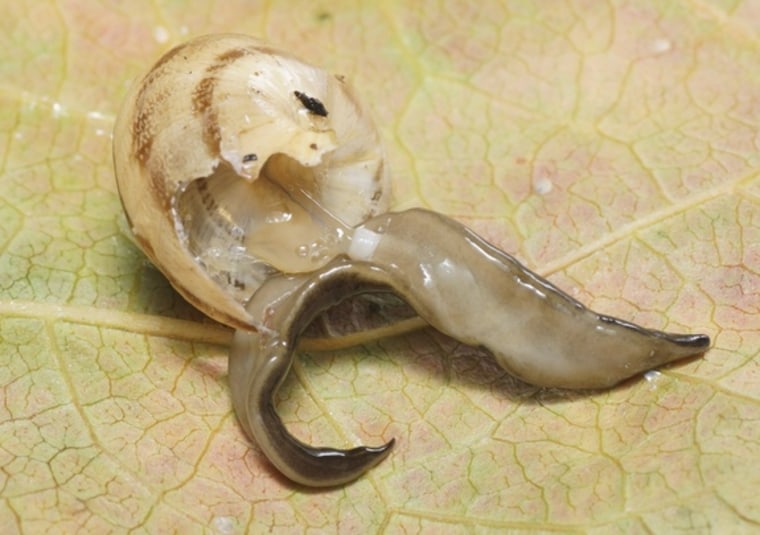A bizarre invasive worm with its mouth in the middle of its belly has been found in the United States for the first time, according to new research.
The New Guinea flatworm (Platydemus manokwari) is only a couple of millimeters thick but grows to be up to 2.5 inches (65 millimeters) long. As its name suggests, the worm is a New Guinea native, but it has been spreading across the globe, hitching rides on exotic plants and in soil. The worm wraps itself around snails and ingests them with a mouthlike structure on its underside. As an invasive species, it's a threat to native snails — so much so that the Invasive Species Specialist Group of the International Union for Conservation of Nature (IUCN) lists it among the 100 worst invasive species in the world.

The flatworm had previously been detected in the wild in 15 countries, as well as in a greenhouse in France, but this is the first time it's been found in North America. A multinational group of researchers, led by scientists at the Muséum National d'Histoire Naturelle in France, combed through flatworm specimens and photographs collected by locals around the world. [See Photos of Bizarre Flatworm & Other Destructive Invasive Species]
The researchers discovered P. manokwari in five countries and territories where it had never been reported before: New Caledonia, a small collection of islands in the southwest Pacific; Singapore; the Solomon Islands, also in the southwest Pacific; Puerto Rico; and Florida.
The introduction of the species appeared to be recent in many of these cases. The worm probably arrived in Florida in or around 2012, the researchers reported in the open-access journal PeerJ. Since then, it seems to have established itself and can now be found in multiple places in Miami-Dade County.
The discovery of the flatworm in the United States is particularly concerning because it had previously been confined mostly to small islands. From Florida, however, P. manokwari could easily spread to the rest of the United States and the Americas.
This is a condensed version of a report from Live Science. Read the full report. Follow Stephanie Pappas on Twitter and Google+. Follow Live Science @livescience, Facebook & Google+.
